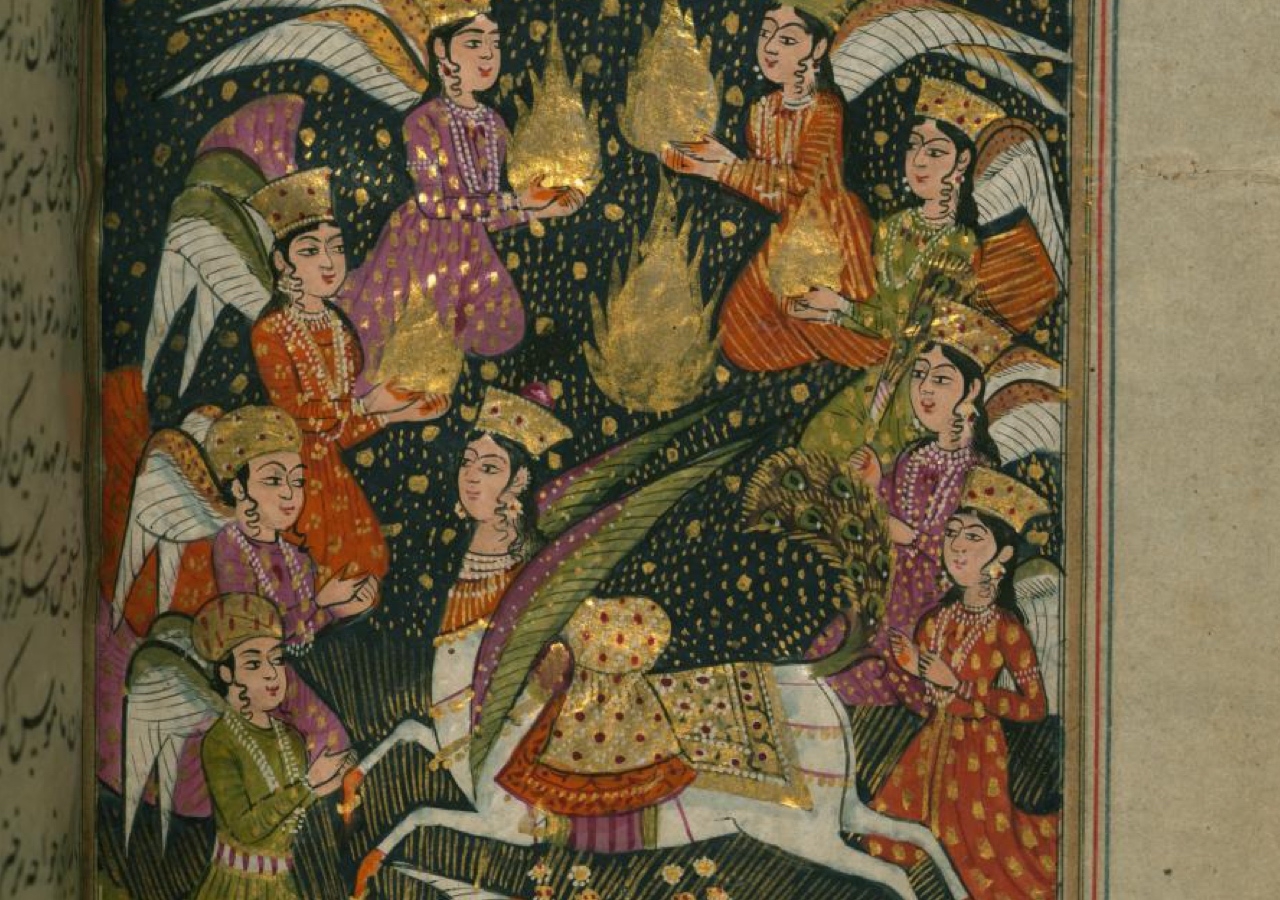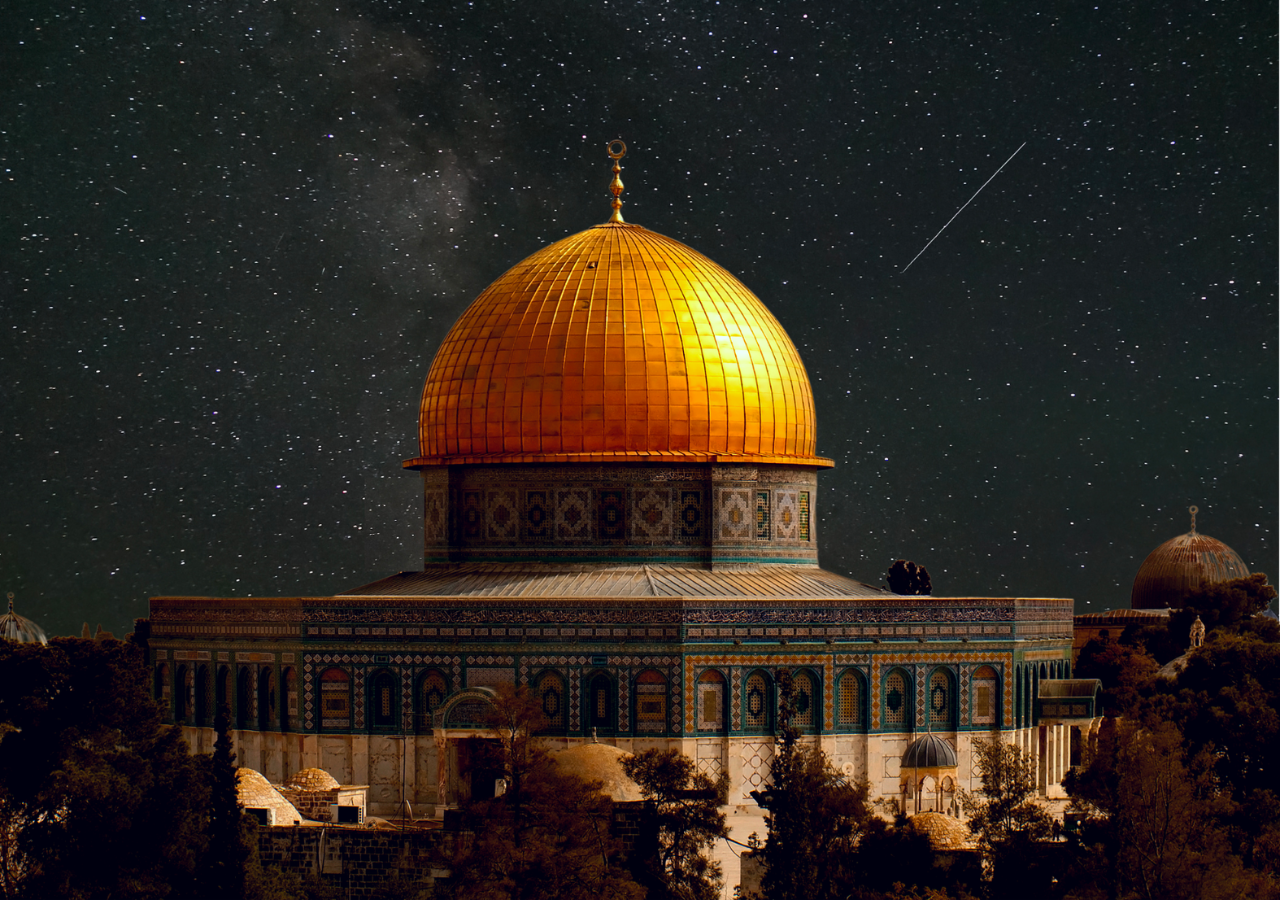Mi‘raj is an Arabic word which literally means ladder. In Muslim tradition, the festival of Mi‘raj signifies the ascent to heaven by Prophet Muhammad (peace be upon him and his family). Esoteric interpretations of Islam tend to emphasise the spiritual significance of Mi‘raj. It is seen as a symbol of the journey of the soul, and the human potential to rise above the trappings of material life – through prayer, piety, and discipline.
In the Qur'an, the most direct reference to the Mi‘raj is found in the first verse of Surah al-Isra, which reads:
Glory be to (Allah) who took His servant on a night journey from the Sacred place of prayer to the Furthest place of prayer, the precincts of which We did bless, so that We may show him some of Our signs. Surely (Allah) is the All-Hearing, All-Seeing.
Qur‘anic references to the Prophet's celestial journey and spiritual vision have an important place in Muslim consciousness. These, combined with oral traditions and historical accounts of the Mi‘raj, have found expression not only in theology, but in art, poetry, and philosophy as well. Ranging from the physical and the miraculous to the spiritual and personal, poetic expressions and philosophical explanations of the Mi‘raj reflect some common themes, including spiritual elevation, purification of the soul, and humility before the Divine.
---
To learn more, click here to watch a short explainer video, and click here to watch an interview with Professor Ali Asani about the significance of Mi‘raj.









